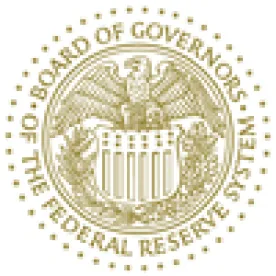The Federal Reserve Board has determined that the Federal Reserve should take the following two actions:
-
Develop a new interbank 24x7x365 real-time gross settlement (RTGS) service to be offered by the Federal Reserve Banks to directly support faster payments and to be called the FedNow Service
-
Explore expanding the hours of the Fedwire Funds Service and the National Settlement Service (NSS), up to 24x7x365 to support liquidity management in private-sector RTGS services for faster payments
The Fed’s determination is set forth in a notice and request for comment issued on August 5, with comments to be due on or before 90 days after the date the notice is published in the Federal Register. The Fed reached its decision to proceed with the development of FedNow after considering the comments it received in response to a notice it published in the Federal Register in November 2018 seeking comment on potential actions it could take to advance the development of faster payments and support the modernization of payment services in the United States.
In the August notice, the Fed observes that it does not have plenary or supervisory authority over the U.S. payment system and instead has traditionally influenced retail payment markets through its role as an operator. As a result, the Fed believes its operational role as a provider of interbank settlement is the most effective approach “to improve the prospects of ubiquitous, safe, and efficient payments in the United States.” In its view, serving this operational role would be consistent with its historical role as a provider of payment services alongside the private sector.
The Fed indicates that it “is committed to launching the FedNow Service as soon as practically possible” and that “[p]ending engagement with the industry, the Board anticipates that the FedNow Service will be available in 2023 or 2024.” Observing that nationwide reach rather than initial availability is a “critical measure of success for faster payments” and that it expects achieving such reach will take longer regardless of when the service is initially available, the Fed states that it “will engage quickly with industry participants to gather input for finalizing the initial design and features of the service” and that once the initial design and features are finalized, the Fed “will publish a final service description in a subsequent Federal Register notice, with additional information provided through existing Reserve Bank communication channels.”
FedNow features.
Key features of the FedNow Service would include:
-
It would be available to banks eligible to hold accounts at the Reserve Banks under applicable federal statutes and Fed rules, policies, and procedures, and a participating bank could designate a service provider or agent to submit or receive payment instructions on its behalf and could choose to settle payments in the account of a correspondent bank.
-
It would be designed to support credit transfers, where a sender initiates a payment to an intended receiver for a variety of use cases, such as person-to-person payments, bill payments, and business-to-business payments, with the maximum value of transactions initially limited to $25,000.
-
It would settle interbank obligations through debit and credit entries to balances in the banks’ master accounts at the Reserve Banks, with all settlement entries for transactions through FedNow to be final.
-
A participating bank would be required to make the funds associated with individual payments available to its end-user customers immediately after receiving notice of settlement from FedNow.
-
It would have the ability to process a large volume of payments rapidly, incorporate, in addition to interbank settlement information, messaging required to complete end-to-end payments and would support the inclusion of additional descriptive information related to a payment.
-
FedNow’s 24x7x365 continuous processing of payments would not be affected by the existence of the opening and closing times, with end-of-day balances to be calculated for master accounts on each calendar day, including weekends and holidays, and banks would be expected to maintain a positive end-of-day balance each day and avoid overnight overdrafts.
-
A “business day” would be established by setting opening (beginning-of-day) and closing (end-of-day) times (in eastern time), with this business day used to determine end-of-day balances, conduct associated reserve and interest calculations, and for transaction reporting and account reconciliation purposes.
The Fed views an RTGS service that it provides as particularly important for smaller and midsize banks seeking to implement faster payment services. It suggests that the relatively high cost and difficulty of onboarding such banks to an RTGS service would likely be a significant obstacle for private-sector operators in building the connections and customer service capabilities needed to onboard the significant number of smaller banks needed to achieve true nationwide reach. The Fed indicates that it has already made substantial investments in such capabilities and has significant experience and expertise in providing services to smaller banks. It believes its long-standing relationships with and connections to thousands of banks across the country provide a solid foundation for FedNow to facilitate those banks gaining access to an RTGS infrastructure for faster payments and that FedNow can therefore be reasonably expected to reach thousands of banks that might not otherwise have access to an RTGS infrastructure.
The Fed also discusses the issue of interoperability via direct exchange of payments between RTGS infrastructure operators so as to allow payment originated by a participant of one service to be received by a participant of another service. It notes that large banks and private-sector operators commenting on its November 2018 notice expressed significant concerns that interoperability posed potentially insurmountable technical and operational challenges. While the Fed expresses agreement with the position that interoperability is a desired outcome, it states that it may be difficult to achieve, particularly early on. It further states that as opposed to interoperability in and of itself, it views nationwide reach as a key objective for RTGS infrastructure and that such reach does not inherently depend on interoperability. The Fed indicates that it intends to explore interoperability and other paths to achieving nationwide reach during its engagement with industry.
The notice includes the Fed’s initial competitive impact analysis, which looks at whether FedNow would have a direct and material adverse effect on the ability of other service providers to compete effectively with the Fed in providing similar services due to differing legal powers or constraints or due to a dominant position of the Fed deriving from such legal differences.
Expanding Fedwire Funds Service and NSS Hours. Observing that RTGS-based faster payment services require banks to have sufficient liquidity to perform interbank settlement at any time and on any day, the Fed indicates that it believes expanding the hours of the Fedwire Funds Service and NSS would be the most effective way to provide such liquidity and could provide additional benefits to financial markets. In its view, the ability to transfer funds from master accounts to a joint account during nonstandard business hours would allow participants in a private-sector RTGS service to manage liquidity on a “just-in-time” basis and remove the need to increase funding in a joint account ahead of weekends, holidays, and other times when liquidity transfers are not currently possible. Such liquidity management would also decrease the likelihood that a bank would have insufficient liquidity to settle a payment and reduce the risk that an individual or business would experience incomplete payment. In light of the potential benefits, the Fed plans to explore the expansion of the Fedwire Funds Service and NSS hours but indicates that additional analysis is needed to fully evaluate the relevant operational, risk, and policy considerations for the Reserve Banks and participants. In light of the potential benefits, the Fed plans to engage with industry on issues related to expanded Fedwire Funds Service and NSS operating hours, as well as potential approaches for expanding those hours.



 />i
/>i

